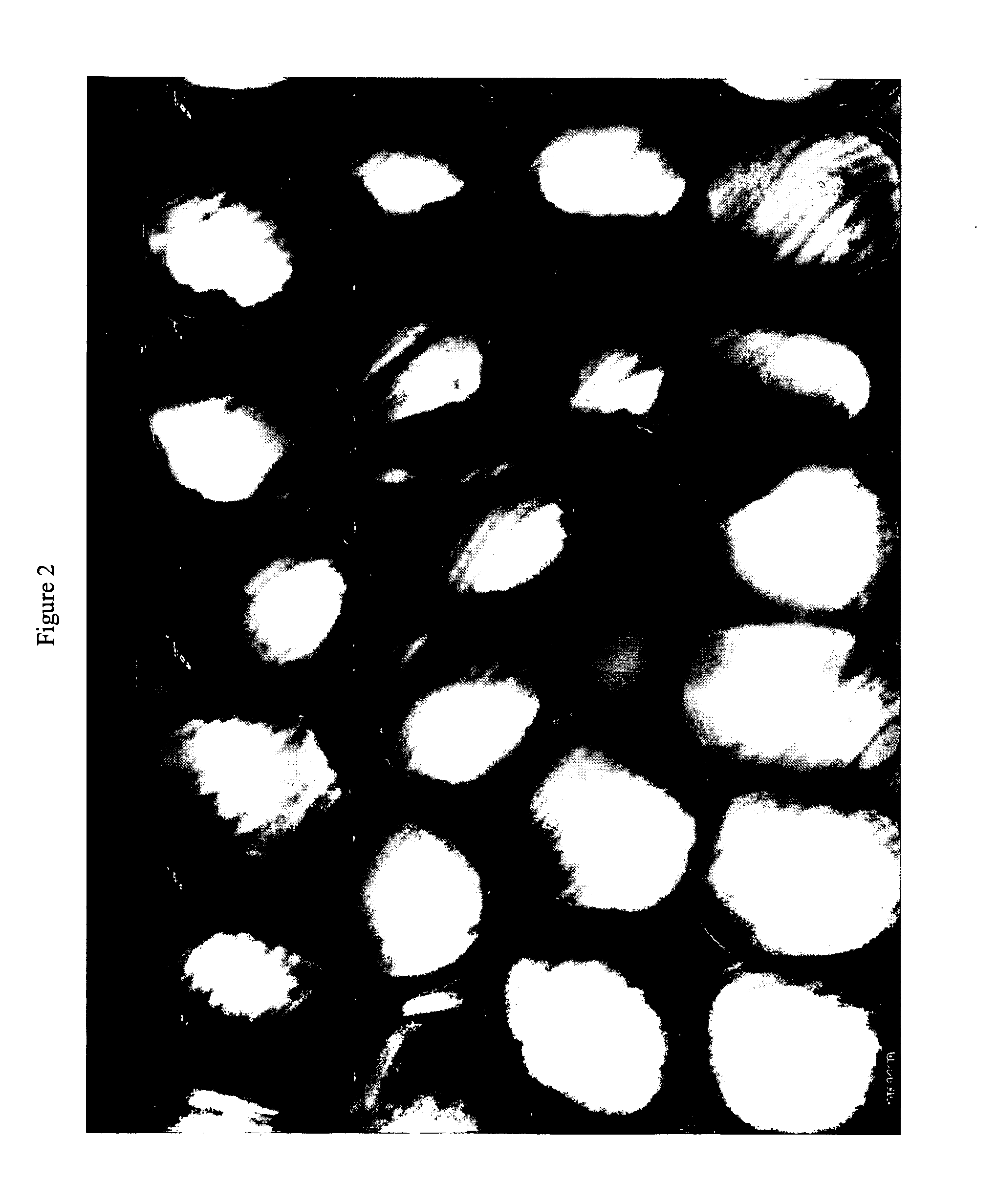Elastomeric fibers comprising controlled distribution block copolymers
a technology of elastomeric fibers and copolymers, which is applied in the field of elastomeric fibers, can solve the problems of high melt viscosity, high melt elasticity, and high melt viscosity, and achieve high melt flow, high melt rate, and high melt flow of elastomeric compounds.
- Summary
- Abstract
- Description
- Claims
- Application Information
AI Technical Summary
Benefits of technology
Problems solved by technology
Method used
Image
Examples
examples
[0074] The term “elastic” is used herein to mean any material which, upon application of a biasing force, is stretchable, that is, elongatable at least about 60 percent (i.e., to a stretched, biased length which is at least about 160 percent of its relaxed unbiased length) and which, will recover at least 50 percent of its elongation upon release of the stretching, elongating force. A hypothetical example would be a one (1) inch sample of a material which is elongatable to at least 1.60 inches (4.06 cm) and which, upon being elongated to 1.60 inches (4.06 cm) and released, will recover to a length of not more than 1.30 inches (3.30 cm). Many elastic materials may be elongated by much more than 60 percent (i.e., much more than 160 percent of their relaxed length), for example, elongated 100 percent or more, and many of these will recover to substantially their initial relaxed length, for example, to within 105 percent of their initial relaxed length, upon release of the stretching fo...
examples 1-10
[0077] Bicomponent fibers with a polypropylene sheath and a controlled distribution block copolymer core at sheath / core ratios of 30 / 70 and 20 / 80 were made and tested. FIG. 2 shows representative fibers before winding having a 20 / 80 sheath / core ratio. The polypropylene sheath was a homopolymer (5D49) from The Dow Chemical Company having a nominal 38 melt flow rate (MFR, 230° C., 2.16 kg). The controlled distribution block copolymer (Polymer A) was a linear, coupled block copolymer having a controlled distribution styrene ethylene / butylene midblock. The total styrene equivalent peak molecular weight of Polymer A was 68,300 and the total styrene content was 47% wt. The styrene endblock had a peak molecular weight of 7,200. The controlled distribution midblock contained 25% styrene monomer basis the total styrene plus butadiene of the midblock. The styrene blockiness of the midblock was 3% indicating a high degree of separation of styrene, units only achievable by controlled distributi...
example 15
[0079] Bicomponent fibers were coextruded using the method of examples 1-10 using a spinneret having an islands-in-the-sea configuration with 36 islands. FIG. 1 shows the fibers so made. The spinneret hole size was 0.35 mm and there were 72 holes. The polymer throughput was 0.77 g / hole / min. Bicomponent fibers with a polypropylene sea and Polymer A islands at a 20 / 80 sea / island ratio. The polypropylene sea was homopolymer 5D49 from The Dow Chemical Company. The elastomer core was Polymer A. The spinning performance and mechanical properties for this spinning configuration are given in Table 3. One can see that high speed spinning and fine fibers were achieved having good fiber tensile strength and high elongation to break. The comparable sheath-core bicomponent fiber was made as example 9. The equivalent fiber having an island-in-the-sea morphology had significantly higher elongation and was noticeably softer to the touch.
TABLE 3Sea / SpinningElongationIslandSpeedTenacityat BreakExam...
PUM
| Property | Measurement | Unit |
|---|---|---|
| weight percent | aaaaa | aaaaa |
| weight percent | aaaaa | aaaaa |
| order-disorder transition temperature | aaaaa | aaaaa |
Abstract
Description
Claims
Application Information
 Login to View More
Login to View More - R&D
- Intellectual Property
- Life Sciences
- Materials
- Tech Scout
- Unparalleled Data Quality
- Higher Quality Content
- 60% Fewer Hallucinations
Browse by: Latest US Patents, China's latest patents, Technical Efficacy Thesaurus, Application Domain, Technology Topic, Popular Technical Reports.
© 2025 PatSnap. All rights reserved.Legal|Privacy policy|Modern Slavery Act Transparency Statement|Sitemap|About US| Contact US: help@patsnap.com


